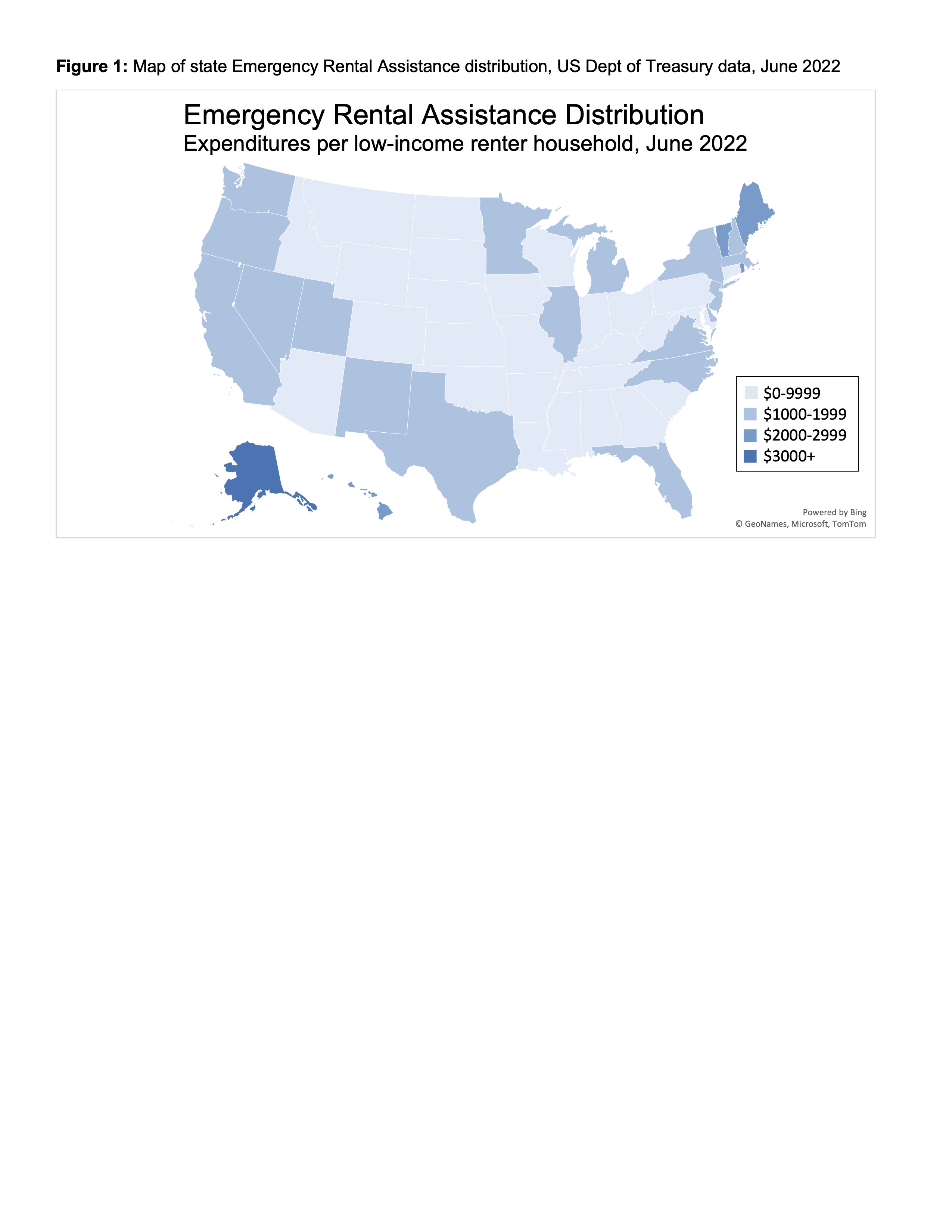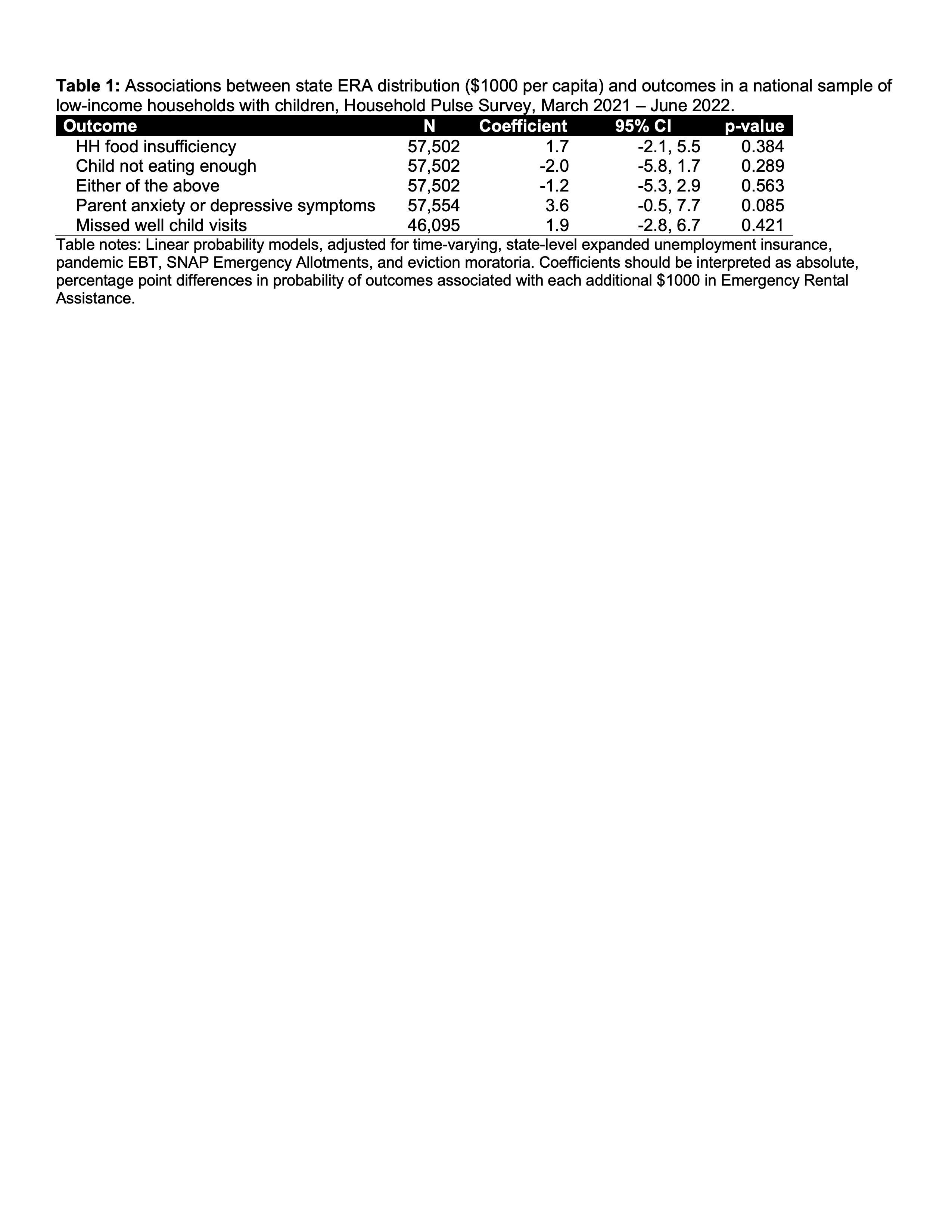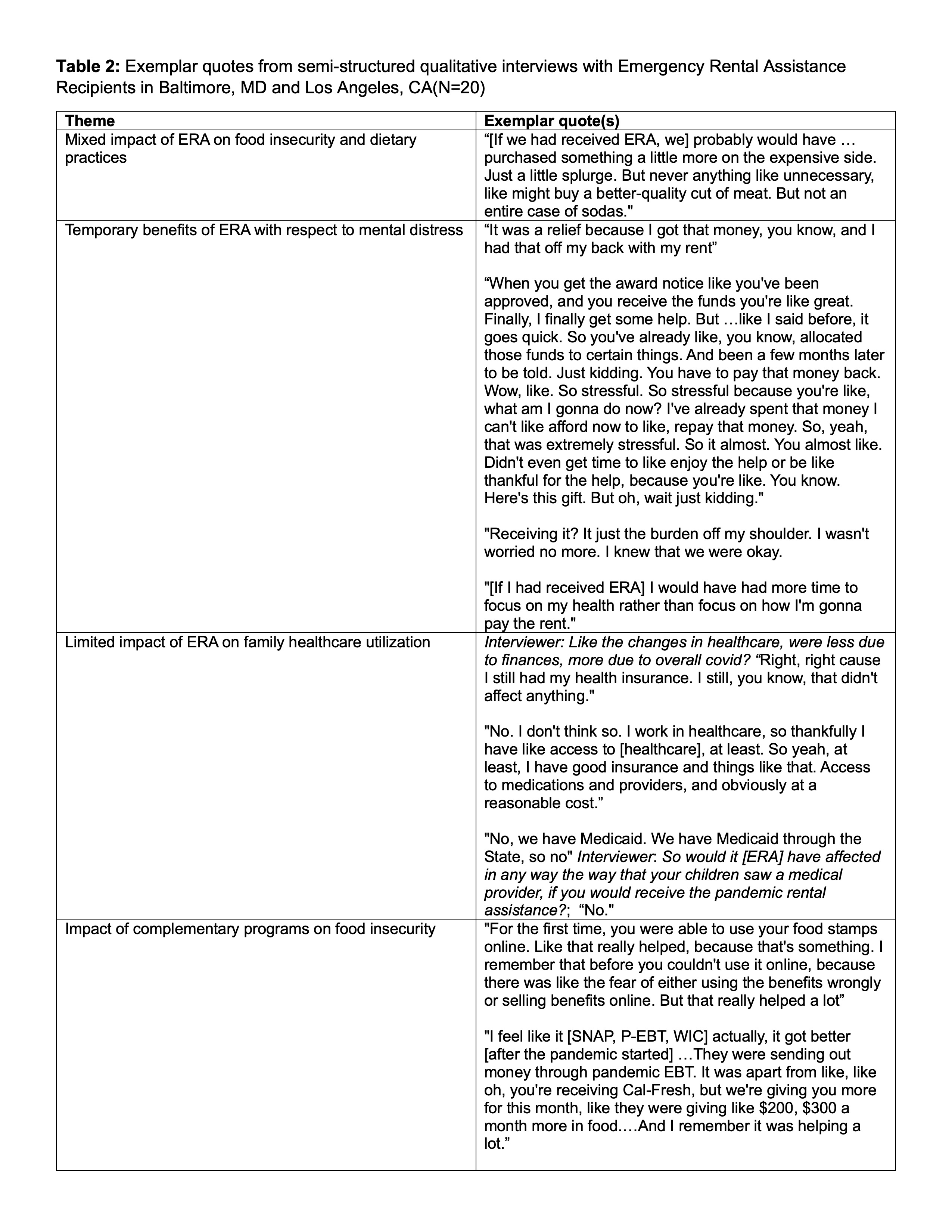Public Health & Prevention 1
Session: Public Health & Prevention 1
370 - The rent eats first: A multi-methods study of emergency rental assistance, food insecurity, and related health outcomes
Sunday, April 27, 2025
8:30am - 10:45am HST
Publication Number: 370.6807
Kathryn Leifheit, University of California, Los Angeles David Geffen School of Medicine, Los Angeles, CA, United States; Sabriya L. Linton, Bloomberg School of Public Health at Johns Hopkins University, Baltimore, MD, United States; Craig Pollack, Johns Hopkins University, Baltimore, MD, United States; Angela Suárez, Johns Hopkins University School of Medicine, Washington, DC, United States; Amina S. Antar, Johns Hopkins Bloomberg School of Public Health, Laurel, MD, United States; Gabriel Piña, MEF Associates, Rockville, MD, United States; Eliana M. Perrin, Johns Hopkins University Schools of Medicine, Nursing, and Public Health, Baltimore, MD, United States
- KL
Kathryn Leifheit, PhD MSPH
Assistant Professor, Pediatrics
University of California, Los Angeles David Geffen School of Medicine
Los Angeles, California, United States
Presenting Author(s)
Background: Though families tell us, “The rent eats first,” it is unknown how interventions designed to reduce housing insecurity affect food insecurity (FI) and other health factors. States’ uneven implementation of emergency rental assistance (ERA) during the COVID-19 pandemic provides a unique opportunity to understand these relationships.
Objective: Among low-income renter households with children, we sought to: a) measure quantitative and qualitative associations between state distribution of ERA and household FI, mental health, and family healthcare utilization and b) identify caregivers’ perspectives on barriers and facilitators to securing ERA.
Design/Methods: We conducted a multi-methods study. First, quasi-experimental methods estimated ERA impact in a national sample. We measured ERA distribution (per-capita dollars distributed by state-month) using US Department of Treasury data and outcomes (household and child FI, caregiver mental health, and missed well-child visits) using the Census’s Household Pulse survey. Difference-in-difference linear probability models included fixed effects for state and time, survey weights, and time-varying controls for concurrent state food, housing, and unemployment supports. Then, we conducted in-depth qualitative interviews with ERA applicants recruited from existing cohorts in Baltimore, MD and Los Angeles, CA. We used deductive thematic analysis to identify themes related to dietary practices, health, and barriers and facilitators to securing ERA.
Results: Quantitative analyses included 57,502 low-income renters with children. In quantitative analyses, ERA distribution was not associated with household or child FI, caregiver mental health, or well-child visits. Interviews with 20 predominantly Black and Latine ERA applicants (11 received ERA; 9 did not) reported mixed impacts on food insecurity and dietary practices, temporary improvements in mental health, and little impact on family healthcare utilization. Participants noted that COVID-era food programs such as Pandemic-EBT and SNAP emergency allotments impacted their food security more directly and recommended that future ERA programs extend assistance duration.
Conclusion(s): In our multi-methods study, ERA was not strongly associated with food insecurity or healthcare, and impacts on mental health were mixed. Null findings may be partially attributable to the availability of expanded food programs during this time. Future research should measure health impacts of ERA-type programs in non-pandemic contexts.
Map of state Emergency Rental Assistance distribution, US Dept of Treasury data, June 2022

Associations between state ERA distribution ($1000 per capita) and outcomes in a national sample of low-income households with children, Household Pulse Survey, March 2021 – June 2022.
 Table notes: Linear probability models, adjusted for time-varying, state-level expanded unemployment insurance, pandemic EBT, SNAP Emergency Allotments, and eviction moratoria. Coefficients should be interpreted as absolute, percentage point differences in probability of outcomes associated with each additional $1000 in Emergency Rental Assistance.
Table notes: Linear probability models, adjusted for time-varying, state-level expanded unemployment insurance, pandemic EBT, SNAP Emergency Allotments, and eviction moratoria. Coefficients should be interpreted as absolute, percentage point differences in probability of outcomes associated with each additional $1000 in Emergency Rental Assistance.Table 2: Exemplar quotes from semi-structured qualitative interviews with Emergency Rental Assistance Recipients in Baltimore, MD and Los Angeles, CA(N=20)


